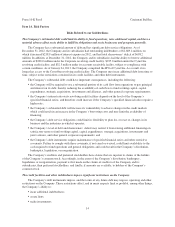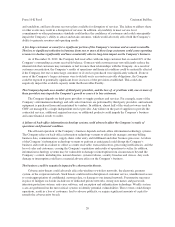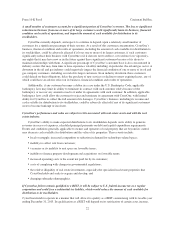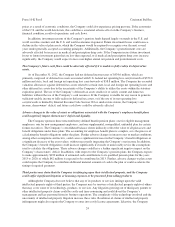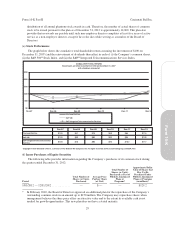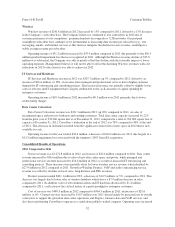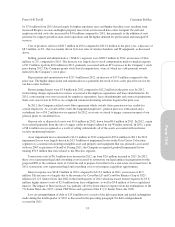Cincinnati Bell 2012 Annual Report Download - page 97
Download and view the complete annual report
Please find page 97 of the 2012 Cincinnati Bell annual report below. You can navigate through the pages in the report by either clicking on the pages listed below, or by using the keyword search tool below to find specific information within the annual report.
Form 10-K Part I Cincinnati Bell Inc.
organizational, distribution, stockholder ownership and other requirements on a continuing basis. Its ability to
satisfy the asset tests depends upon its analysis of the characterization and fair market values of its assets, some
of which are not susceptible to a precise determination.
If CyrusOne were to fail to remain qualified as a REIT in any taxable year, it would be subject to U.S.
federal income tax, including any applicable alternative minimum tax, on its taxable income at regular corporate
rates, and dividends paid to its stockholders would not be deductible by it in computing its taxable income. Any
resulting corporate tax liability could be substantial and would reduce the amount of cash available for
distribution to its stockholders, which in turn could have an adverse impact on the value of its common stock.
Unless CyrusOne was entitled to relief under certain Internal Revenue Code provisions, it also would be
disqualified from re-electing to be taxed as a REIT for the four taxable years following the year in which it failed
to qualify as a REIT.
CyrusOne’s cash available for distribution to stockholders may not be sufficient to make distributions at
expected levels.
Distributions made by CyrusOne will be authorized and determined by its board of directors in its sole
discretion out of funds legally available therefor and will be dependent upon a number of factors, including
restrictions under applicable law and its capital requirements. CyrusOne may not be able to make or sustain
distributions in the future. To the extent that it decides to make distributions in excess of its current and
accumulated earnings and profits, such distributions would generally be considered a return of capital for U.S.
federal income tax purposes to the extent of the holder’s adjusted tax basis in its shares. A return of capital is not
taxable, but it has the effect of reducing the holder’s adjusted tax basis in its investment. To the extent that
distributions exceed the adjusted tax basis of a holder’s shares, they will be treated as gain from the sale or
exchange of such stock.
Other Risk Factors
The trading price of the Company’s common stock may be volatile, and the value of an investment in the
Company’s common stock may decline.
The market price of the Company’s common stock has been volatile and could be subject to wide
fluctuations in response to, among other things, the risk factors described in this report and other factors beyond
the Company’s control, such as stock market volatility and fluctuations in the valuation of companies perceived
by investors to be comparable to the Company.
The stock markets have experienced price and volume fluctuations that have affected the Company’s stock
price and the market prices of equity securities of many other companies. These broad market and industry
fluctuations, as well as general economic, political, and market conditions, may negatively affect the market
price of the Company’s stock.
Companies that have experienced volatility in the market price of their stock have periodically been subject
to securities class action litigation. The Company may be the target of this type of litigation in the future.
Securities litigation could result in substantial costs and/or damages and divert management’s attention from
other business concerns.
The uncertain economic environment, including uncertainty in the U.S. and world securities markets, could
impact the Company’s business and financial condition.
The uncertain economic environment could have an adverse effect on the Company’s business and financial
liquidity. The Company’s primary source of cash is customer collections. If economic conditions were to worsen,
some customers may cancel services or have difficulty paying. These conditions could result in lower revenues
and increases in the allowance for doubtful accounts, which would negatively affect the results of operations.
Furthermore, the sales cycle could be further lengthened if business customers slow spending or delay decision-
making on the Company’s products and services, which could adversely affect revenues. If competitors lower
23
Form 10-K



